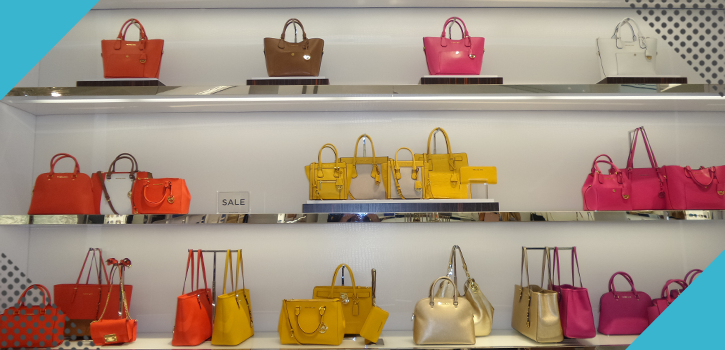In the context of internationalisation and expansion, native ads present an attractive possibility to skilfully tackle the specific characteristics of a given market. Native advertising offers a form of advertising which appears “natural” and has long served as a key tool in the repertoire of successful marketers seeking to recruit new customer bases or reactivate existing customer databases. The predictions speak for themselves: according to Alex McIlvenny, the UK Country Manager of Ligatus, the budget allocated to native ads in Europe is set to reach up to €13 billion by 2020.
But what exactly does ‘Europe’ mean in this scenario? What are the budgetary contributions being made by individual European states to this mammoth sum? An equally important point to consider: which characteristics determine the goodwill or scepticism of marketers towards native advertising in a given market? TextMaster is here to provide you with an overview of the prevailing trends in different markets. The USA shall be used as a benchmark and called upon as an example.
“Native advertising” – Points of agreement
Before we can delve into the specific characteristics of each market, we should first establish what might be considered as universally applicable. This is because the understanding of native advertising is highly diverse and can take many different forms. The scope of native advertising’s use and applicability therefore also varies accordingly.
There is one common thread, however: native advertising is characterised by advertising formats which are contextually relevant, and which are typically not viewed as advertisements themselves. This is due to the fact that they might be intuitively integrated into editorial contributions, for example, rather than necessarily being labelled as advertising in the same way as traditional advertisements. This not only allows for increased trust in the brand, but it also explicitly promotes user engagement and sales conversions.
In addition, there are advertising formats in this context which are common across all markets. An example of this might be social native advertising formats in social networks, or the most popular kind of format, in-feed ads. Something similar can be said of the range of providers whose international activities are relatively homogeneous. The best known examples here include Taboola, Ligatus and Outbrain.
Situations in different markets
USA – United States of America
The immense array of consumers alone makes the USA one of the most promising markets for advertising activities in general. Given that a great many virtual networks such as Facebook and Instagram were developed here, it is understandable that the average American web user is used to a dazzling variety of advertisements. This has made the need for native advertising formats all the greater, which have found a more subtle way to address customers and encourage interaction.
Furthermore, predictions do not give the impression that this is a trend that will change any time soon. Business Insider magazine estimates that by 2021, 74% of all advertising revenue could come from display ads in digital channels. By way of comparison, this figure stood at only 56% in 2016. In-feed and social native ads are playing an especially significant role in this success story.
Nonetheless, the B2B segment in particular has become very sensitive in terms of quality standards as a result. As a result of high advertising penetration generally, the requirements for effectively conveying a message in advertising have increased dramatically. Consequently, it is on the one hand simple to implement and take advantage of native advertising, as there is already a vast amount of digital infrastructure designed for native advertising. On the other hand however, it is comparatively difficult to sufficiently convince or convert the customer, as the floods of advertising they face have left them desensitised. This means that the greatest challenge in the USA is generating content which stands above the crowd of competitors in terms of quality.
Germany
In Germany it is most often data protection and user data which prove to be sticking points when implementing an online web strategy. Native ads, regardless of their characteristic as a less-bothersome form of advertising for the costumer experience, are also affected by this.
Due to the fundamentally rather critical and analytical customer profile of the average German, it is particularly important to construct the entire native ad strategy around a perfect customer journey. This can lead not just to a positive influence upon the customer, but also to the development of a strategy which is transparent from a data protection and adblocking perspective and which can favourably impact the brand image and customer confidence. Even taking into account the new General Data Protection Regulation (GDPR) which is now active across Europe, valuable customer information can still be gathered in a transparent and customer-focused manner, information which can contribute to the further improvement of click-through rates.
UK – United Kingdom
Native advertising continues to be on the rise in the United Kingdom. As early as 2014, native ads represented 22% of the total advertising expenditure of £509 million (approx. €601 million). One year later and this market share had already risen to 26%.
It is therefore somewhat less surprising that the United Kingdom continues to prove a favourable environment for native advertising. Regulating factors such as adblockers and data protection of course also play a role here, but in terms of consumer awareness, they have a less severe effect than that found in Germany.
One thing to prepare for is an increasingly saturated market environment. What does that actually mean? Numerous service providers have responded to the enormous demand for native advertising across a correspondingly broad range of areas by specialising, which is certainly interesting in terms of pricing and creativity, but this can also become rather confusing. This is the case in particular for those specifically seeking a partner in the United Kingdom.
France
France’s big boom in native advertising in 2016 left its mark. As a result of this massive trend, a profitable market environment sprang up rapidly, providing an ideal environment for the placement of native advertising. The mentality of the French web user is conditioned to expect a liberal approach to advertising, similar to the British. It can therefore be assumed that there is also high tolerance for advertising messages here.
On the other hand, the market environment is much less exhausted than that in the United Kingdom, for example. The French native advertising agency “Quantum Advertising” reported in a statement that this fact means the market indeed has more room for unconventional and creative approaches, though it is also still very unstructured. As a consequence, businesses seeking to turn to native advertising are sometimes faced with a few obstacles. To give one example: many native advertising providers have not yet established a comprehensive portfolio, making it necessary for businesses to involve several providers in order to start their native advertising campaigns. One provider may take care of the creative aspects, for example, while another is responsible for content and another for integration. As a result, extended time periods between the conceptualisation and implementation of a native ad campaign are to be expected. The same applies to publishers who have perhaps not yet installed all of the technical features for native advertising campaigns.
Nonetheless, it remains possible to work with large established players at any given time, so this part of the problem clearly poses less of an issue.
Four key principles of successful B2B native advertising
A content and advertising strategy which has been tailored to the market is of course one the main factors in achieving international success. That said, in the field of native advertising there are a few best practices which may serve you as a starting point for the development of your own strategy. We’ve put together four specific examples for you:
1. Tell an engaging story
Even if the jargon of B2B advertising often leads to rather formal and factual communication, your advertisement should “tell a story” which sets you apart from your competitors. By using traditional storytelling elements such as antagonists (the competition, complex professional challenges) and protagonists (your brand as the story’s hero), your customers will much more easily be able to construct an individual and emotional association with your brand.
2. Remain credible and personal
The authentic messages which develop around your brand should be based upon the specific expertise of your business, and should therefore not be presented in a way which is too vague or general. Develop a personal approach to your clientele which bears the signature of your business.
3. Listen
Successful B2B businesses understand the concerns of their clientele and know how to integrate practical approaches to solutions into their communication. Needless to say, this is an important concept in native advertising. Address the needs of the customer profile in question and highlight what it is that your product can contribute to solving the problem.
4. Don’t become too commercial
First and foremost, your customer’s perception must be that your content (native ad) can offer added value rather than simply looking to monetise. Start right here! Shape the costumer journey after they’ve clicked your native ad, all while bearing added value in mind. Inform and entertain. In this way, you can significantly minimize the risk of high bounce rates immediately after the first click on your ad.
A good starting point for achieving these key principles is the conception and creation of content in the relevant language. This allows for an authentic approach and the development of a cohesive content and advertising strategy. If you want to know more about technologies that could help you accelerate your international expansion, make sure to download our free ebook!






